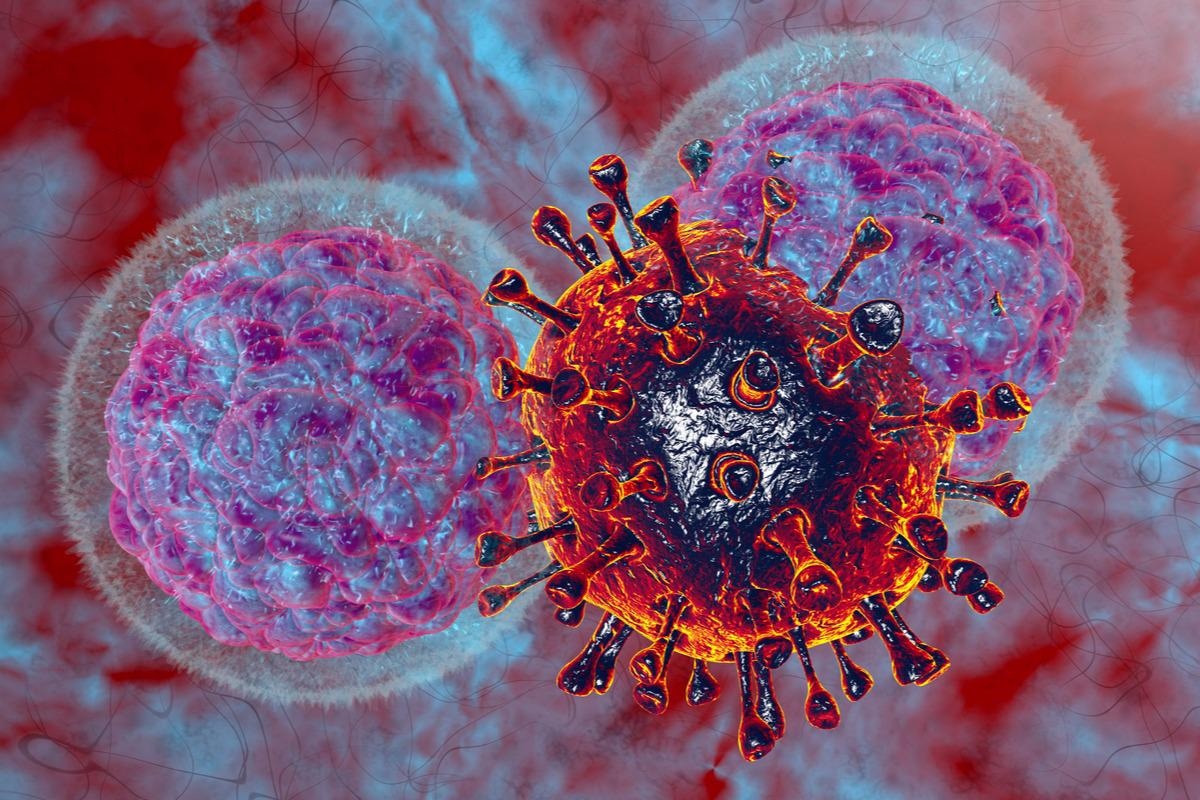In a recent study published in Biomedicines, researchers explored the utility of natural killer (NK) cells in coronavirus disease 2019 (COVID-19).
 Study: Exploring the Utility of NK Cells in COVID-19. Image Credit: Numstocker/Shutterstock
Study: Exploring the Utility of NK Cells in COVID-19. Image Credit: Numstocker/Shutterstock
Background
Studies have reported the association of elevated NK cell counts with declining viral loads, decreased duration of severe acute respiratory syndrome coronavirus 2 (SARS-CoV-2) ribonucleic acid (RNA) shedding, stronger humoral responses, and improved overall survival of SARS-CoV-2-positive patients. SARS-CoV-2 clearance and COVID-19 progression strongly correlate with NK cell counts, and their dysregulation enhances SARS-CoV-2 susceptibility and severity of infection. Therefore, NK-cell-based anti-SARS-CoV-2 therapeutics could potentially ameliorate COVID-19.
In the present study, researchers elucidated the NK cell function in COVID-19 immunosurveillance.
NK cells and their mechanism of action
NK cells are lymphocytes of the innate immune system, which also regulate adaptive immune responses. Based on the presence or absence of major histocompatibility complex class I (MHC-I) proteins, host cells are identified as ‘self’ or ‘non-self,’ respectively. NK cells act against the ‘non-self’ cells.
MHC-I-specific inhibition receptors such as the lectin-like cluster of differentiation 94 (CD94)–NKG2A heterodimers and killer cell immunoglobulin-like receptors (KIRs) are present on NK cells which identify the ‘self’ cells (expressing MHC-I) and thereby prevent the activation of NK cells. On the other hand, pathogenically activated receptors such as NKp30, NKp46, and NKG2D, activate NK cells. The functional outcome of NK cells is determined by the integration of both activating and inhibitory signals that regulate NK cell activity.
NK cells destroy the target cells by several mechanisms such as (i) direct target-cell lysis by granzymes- and perforin-mediated or death receptors-mediated cytotoxic degranulation (ii) indirect target-cell eradication by the production of cytokines, such as tumor necrosis factor-α (TNF-α), interferon-γ (IFN-γ); (iii) CD16 expression, that enables the antibody-coated target cells to be detected [antibody-dependent cell cytotoxicity (ADCC)] and production of cytokines such as interleukins (IL-2, 12, 15, 18) and type I IFN, and (iv) by immune crosstalk with monocytes that induce IFN-γ secretion thereby increasing cytotoxicity. Besides CD16, NK cells have another cell-surface marker, CD56. The CD56dim and CD56bright are involved in ADCC and cytokine production, respectively.
SARS-CoV-2-infected cells down-regulate MHC-I expression, which reduces NK cell inhibition. These cells also express specific ligands that are directly targeted by receptors of NK cell activation, such as NKp30 and NKG2D, which recognize cytomegalovirus (CMV), and NKp46, which recognizes the influenza virus. NK cells have been implicated in herpetic infections, influenza A, human immunodeficiency virus (HIV), and hepatitis B and C infections.
Thus, NK cells are the prime anti-SARS-CoV-2 effector cells when the acquired immune system is developing immune responses, while the SARS-CoV-2-infected cells are developing immune escape mechanisms to evade T lymphocyte responses. However, of note, NK cell function also causes possible damage to normal cells. Hence, this double-edged immunogenic sword must be used with caution.
NK cells in COVID-19
In COVID-19, the NK cell counts (especially CD56bright NK cells) substantially reduce and inversely correlate with COVID-19 severity. However, the counts are restored post-clinical COVID-19 recovery.
There is a reduction in the NK cell-activating receptors that include sialic acid-binding Ig-like lectin 7 (Siglec-7), NKG2D, DNAX accessory molecule-1 (DNAM-1), NKp46, and CD16, and an increase in the SARS-CoV-2 spike (S) protein-mediated NKG2A, Tim-3, CD39, tumor growth factor-beta (TGF-β), and CD244 expression. DNAM-1 expression in NK cells is essential for SARS-CoV-2 clearance and rapid recovery from infection. CD16 is vital for cytokine production, NK cell maturation, and the prevention of cell death.
Additionally, NK cells also show increased expression of Ki-67, CD98, CD103, and CXCR6 (C-X-C chemokine receptor 6), the transcription factor Aiolos, caspase-3, and CD95, which are associated with hematopoietic development, cell cycle and metabolism, apoptosis, and tissue residency. On the other hand, the expression level of the CD49d (a marker of NK cell extravasation and homing) is reduced.
The number of NK cells that produce CD107a (degranulation marker) is also significantly reduced in COVID-19, with concomitant elevation in C-reactive protein (CRP) and chemokine MIP-1β (macrophage inflammatory protein-β) levels and reduction in anti-inflammatory cytokines (IL-2, IFN-γ, and TNF-α), reflecting widespread systemic inflammation in SARS-CoV-2 infections. As a result, skewing and homing of NK cells to different pulmonary sites with subsequent reduction in their circulating levels in peripheral blood occurs.
Conclusion
The study findings showed that NK cells are robustly activated and exhausted in SARS-CoV-2 infections. The counts of granzyme B- and perforin-armed CD56bright NK cells, expanded adaptive NK cells, and bone-marrow-originating inflammatory precursors in circulation are elevated in severe COVID-19. Thus, NK cells are critical in innate immune responses as essential frontline responders to viral infections. The NK-cell-based therapies could be valuable adjuncts to mitigate COVID-19, especially when administered in the initial stages of COVID-19.